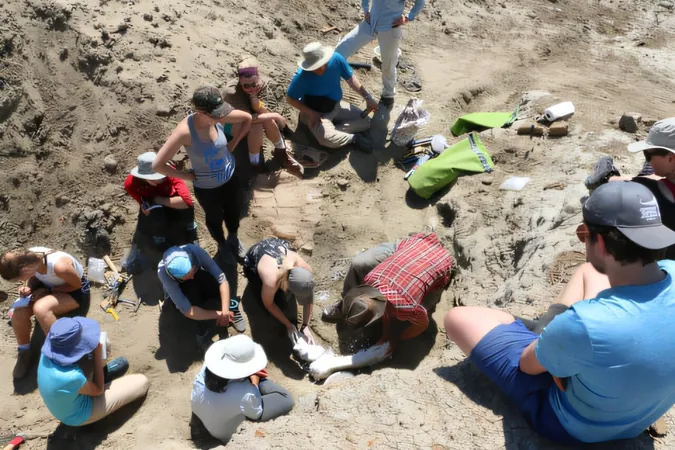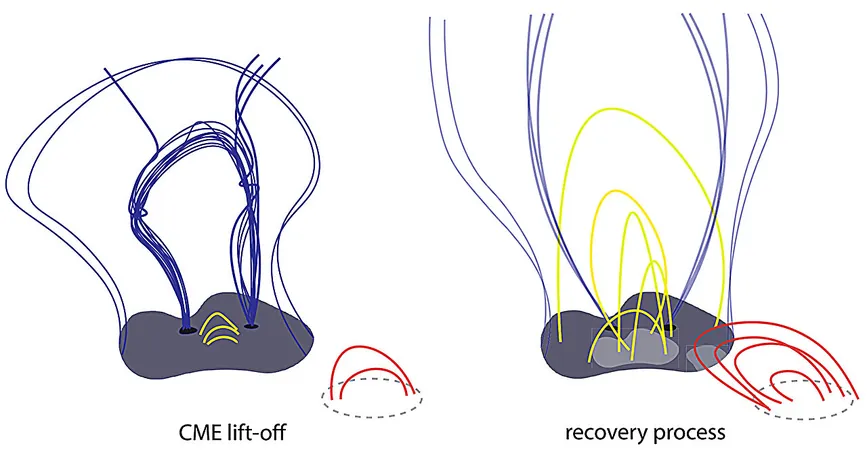
Groundbreaking Discovery: Saskatchewan's First Centrosaurus and Citipes elegans Fossils Unearthed!
2024-11-19
Author: Daniel
Groundbreaking Discovery: Saskatchewan's First Centrosaurus and Citipes elegans Fossils Unearthed!
In a monumental breakthrough for paleontology, researchers and students from McGill University have made an astonishing discovery—Saskatchewan's very first confirmed fossil specimens of the Centrosaurus, a horned dinosaur closely related to the infamous Triceratops. This remarkable find sheds new light on the prehistoric landscape that existed millions of years ago.
The thrilling excavation took place in Saskatchewan Landing Provincial Park, nestled along the South Saskatchewan River. Here, the team not only discovered Centrosaurus fossils but also a rare assortment of dinosaur and marine fossils. This discovery is pivotal in understanding the dynamic ecosystem that thrived at the edge of an ancient sea when sea levels were rising long before the dawn of human civilization.
The findings, spearheaded by prominent biology professor Hans Larsson’s field team, were published in the esteemed Canadian Journal of Earth Sciences. They provide crucial insights into the habitat range of Centrosaurus and the unique coastal ecosystem that defined ancient Saskatchewan during the Late Cretaceous period, approximately 75 million years ago.
"We document the largest collection of fossil specimens attributed to Centrosaurus in Saskatchewan," said Alexandre Demers-Potvin, the lead author of the study and a recent Ph.D. graduate from the Department of Biology. He emphasized the importance of this find, noting that it confirms the presence of these fascinating creatures in areas previously thought to be devoid of horned dinosaurs.
Interestingly, the newly identified fossils suggest that Centrosaurus inhabited regions near a shallow sea alongside various marine vertebrates, such as sharks. "This confirms that the ancient range of this extinct species extended all the way to the eastern coast of an ancient continent that included western North America," Demers-Potvin concluded.
The excavation site, aptly named the Lake Diefenbaker Bonebed, unveils an environment unlike any previously documented in Canada, providing invaluable information about how large terrestrial dinosaurs like Centrosaurus coexisted with marine life in a mosaic of estuaries and barrier islands. While Dinosaur Provincial Park in Alberta has long been a rich source of information about inland ecosystems, this new site offers crucial insights into coastal habitats.
Moreover, the most astonishing aspect of this discovery is the fossilized remains of **Citipes elegans**, a small, parrot-beaked dinosaur previously known only from Alberta. This groundbreaking find marks the first time Citipes elegans has been recorded in Saskatchewan, hinting at a wider diversity of small dinosaur species in the region that could reshape our understanding of Cretaceous ecosystems.
"This entire ecosystem allows us to explore how animals and plants adapted to environmental changes without human influence, on a time scale that far exceeds our own," added Professor Larsson, underscoring the implications of this discovery.
The majority of the fossils in this study were uncovered by enthusiastic McGill students taking part in Larsson’s vertebrate paleontology field course. These valuable fossils have been meticulously prepared and curated at McGill's Redpath Museum over the past decade, significantly contributing to the scientific community’s understanding of Saskatchewan's prehistoric life.
Stay tuned for more updates as researchers continue to uncover the mysteries of our planet's ancient past!



 Brasil (PT)
Brasil (PT)
 Canada (EN)
Canada (EN)
 Chile (ES)
Chile (ES)
 España (ES)
España (ES)
 France (FR)
France (FR)
 Hong Kong (EN)
Hong Kong (EN)
 Italia (IT)
Italia (IT)
 日本 (JA)
日本 (JA)
 Magyarország (HU)
Magyarország (HU)
 Norge (NO)
Norge (NO)
 Polska (PL)
Polska (PL)
 Schweiz (DE)
Schweiz (DE)
 Singapore (EN)
Singapore (EN)
 Sverige (SV)
Sverige (SV)
 Suomi (FI)
Suomi (FI)
 Türkiye (TR)
Türkiye (TR)